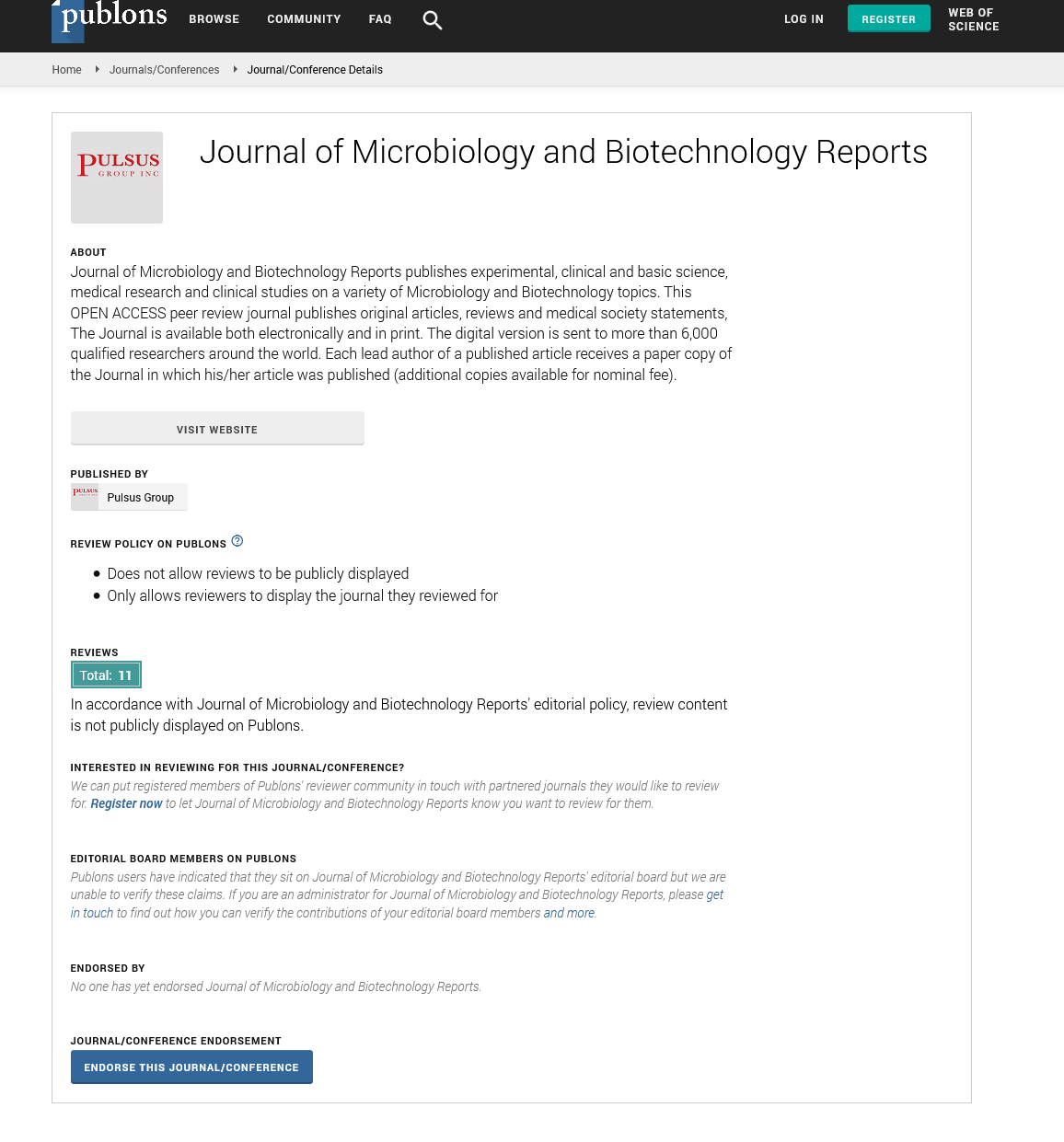In human plasma, cell-free bacterial DNAs offer fingerprints for immune-related illnesses.
Received: 25-Apr-2022, Manuscript No. puljmbr-22-4885; Editor assigned: 27-Apr-2022, Pre QC No. puljmbr-22-4885 (PQ); Accepted Date: May 16, 2022; Reviewed: 11-May-2022 QC No. puljmbr-22-4885 (Q); Revised: 13-May-2022, Manuscript No. puljmbr-22-4885 (R); Published: 20-May-2022, DOI: 10.37532/ puljmbr.2022.5(3).20-21
Citation: Smith J. In human plasma, cell-free bacterial DNAs offer fingerprints for immune-related illnesses. J Mic Bio Rep. 2022; 5(3):20-21.
This open-access article is distributed under the terms of the Creative Commons Attribution Non-Commercial License (CC BY-NC) (http://creativecommons.org/licenses/by-nc/4.0/), which permits reuse, distribution and reproduction of the article, provided that the original work is properly cited and the reuse is restricted to noncommercial purposes. For commercial reuse, contact reprints@pulsus.com
Abstract
Microbiota is becoming more widely acknowledged as a critical component of human health. A wide spectrum of human illnesses has been linked to changes in bacterial community structure. Most microbiota-targeting therapies, such as probiotics, prebiotics, and faecal transplants, try to change the bacterial community's composition. We show that cell free bacterial DNAs (cfbDNAs) are widely found in human bloodstreams and that they emerge progressively with growth. Furthermore, utilizing real-time PCR measurement and high-throughput 16S rDNA sequence studies, patients with immune-related disorders, such as Inflammatory Bowel Disease (IBD), Kawasaki Disease (KD), and HIV, had larger levels of cfbDNAs with lesser microbial biodiversity than healthy individuals. Further analyses indicate that 173 genera are more abundant in healthy people than in patients, resulting in "molecular phenotypes" of the respective disorders in the microbiome, particularly in IBD patients post/pre-therapy. Although the origins and functions of these cfbDNAs in human circulating bloodstreams are unknown, their taxonomic variances give fingerprints for future noninvasive and safe pre-diagnosis or prognosis applications, as well as hints for a better understanding of host-microbiota interactions.
Key Words
Cell free bacterial DNA, Kawasaki disease, Inflammatory bowel disease
Introduction
The possible functions of microbiota in human health and illness, such as obesity, type 2 diabetes, liver cirrhosis, Inflammatory Bowel Disease (IBD), and autism, have been identified via studies of microbiota in the human gut, liver, lung, and other tissues. Growing data reveals significant immunological linkages between microbiota compositions from diverse tissues, such as the links between the gut and the brain, liver, heart, lung, and kidney axis, implying that the bloodstream may serve as a bridge. Based on the examination of blood from healthy volunteers, one research claimed an identical observation of bacterium cells and human blood cells. More notably, germs were identified in 23% of newly given blood, including Propionibacterium acnes and Staphylococcus epidermidis, both of which are typically seen in the skin. Although the role of the blood microbiome in chronic and inflammatory diseases has been discovered, and many attempts have been made to use fetus and tumor DNAs derived from plasma or serum for molecular diagnosis, known as liquid biopsy, little is known about the origin and existence of cell-free bacterial DNAs (cfbDNAs) in the blood circulation system, as well as the effects of their hosts on human immune responses and diseases.
Furthermore, comparing cfbDNAs between healthy people and people with immunological disorders might lead to the development of molecular biomarkers for illness diagnosis and prognosis. Furthermore, direct detection of cfbDNAs in human bloodstreams can give insight into dynamic changes in microbial composition in advance, and even detecting the variation in advance could be beneficial. Furthermore, comparing cfbDNAs between healthy people and people with immunological illnesses might lead to the development of molecular biomarkers for immunerelated disease diagnosis and prognosis. As a result, a thorough knowledge of the link between cfbDNAs and human health, as well as an understanding of the composition variation in advance, might be a beneficial intervention. In this paper, we show that cfbDNAs may be found in both healthy people and ill, and we investigate their origins from newborn newborns through children and eventually adults. We also look into cfbDNA pattern variation and its use in patients with IBD, Kawasaki disease (KD), and HIV, all of which are immune-related disorders, to see if they may be used in the clinic. From autoimmune illness to immune deficiency disease, all three diseases involve the interaction of the microbiota with the human immune system.
In IBD, intestinal bacteria repeatedly break through the epithelial barrier, triggering further immune responses and amplifying the inflammatory response. KD mostly targets the blood vessel walls of children under the age of five. Nobody understands what causes KD, and there isn't even a precise serum marker for it. More study is needed to understand the mechanisms behind microbiome changes and their implications. HIV, which is well-known for its immune-system-damaging effects, can produce significant CD4+ T cell depletion, which can contribute to persistent inflammation and immunological activation, as well as decreased barrier function and pathogen translocation. Taken together, our findings suggest that microbial shifts and changes in the host might be identified in the blood at diagnosis and that these differences could be linked to clinical outcomes.
Conclusion
High-throughput sequencing of amplified 16S rDNA revealed the widespread occurrence of cfbDNAs in human plasma, serum, and blood cells. With time, it may establish itself in human circulation. Various alterations in the number of cfbDNAs were discovered in healthy people and the sick. The 173 biomarkers discovered give "molecular phenotypes" for immune-related illness clinical diagnosis and prognosis.





